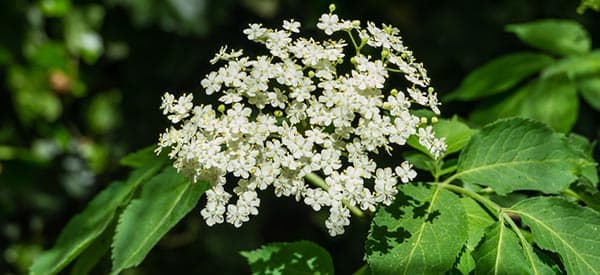
Elder
Elder (Sambucus nigra), or black elderberry, is a woody and herbaceous shrub that bears lacy and dramatic foliage. Elder also displays a profusion of showy flowers that gives way to black and glossy berries favored for cordials, wine, and other culinary uses. Elder has multiple uses in medicine, but it is also dubious for its cyanide-inducing glucosides. In their raw state, elderberries are toxic. The raw stem and all aboveground parts also have medium toxicity when consumed.
The black elderberry has been around for many centuries, with evidence of cultivation dating back to prehistoric man. It was referenced by many historians, including Hippocrates, the ancient Greek Father of Medicine. Folk traditions regard the plant with veneration, and people would ask permission from the tree before using its parts. Many centuries of research later, the elder became a prominent herb in alternative medicinal practices.
Where Elder Is Found
Elder originates from Europe and the native regions in the Northern hemisphere. It was naturalized in America and is now grown commercially in many places around the world. Its natural habitat in the wild is in swamps, wetland margins, shores, thickets, forest edges, and meadows.
⇒ The Complete Map of Edible Plants: Find Out What You Have in Your Area! (Video)
How To Identify Elder
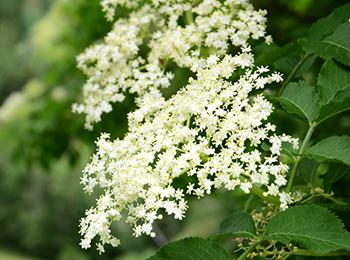
Elder is a shrub with several branches stemming from its base. It is a diverse plant used as skewers, pegs, and wood decors because of its good grain and cutting. In Great Britain, the ripening of elderberries marks the end of summer.
Leaves. Elder is a deciduous shrub with dark green compound leaves that can grow up to 10-inches long. The leaves are arranged alternately and opposite each other on the stem. It has ovate-shaped leaflets with serration narrowing up to the tip.
Flowers. The showy flowers of elder bloom in summer and give off a musky fragrance. They are tiny, yellowish-white to cream color and arranged in a cluster called an umbel. It means that the flowers grow in small stalks and spread from a common point. It also has a cyme inflorescence where the flower produces new growth or shoots from the side.
Fruits and Seeds. Elder has an umbrella-like cluster of fruits that starts green and turns to red and black as they mature. The lustrous and glossy fruits are drupe-type and wrapped in thin skin. Each fruit contains 3 to 5 compressed brown seeds with a tough seed coat. 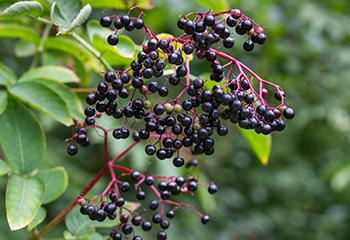
Roots. Elder has a shallow tap root system spreading in an almost mat-like pattern. It makes them an excellent crop for soil erosion prevention.
Stem. An elder bush can grow up to 20 ft (6 m) tall with woody and herbaceous branches. It is covered with light grey bark, which eventually matures into a rough grey bark with ridges on the surface.
⇒ Plant Identification Guide – 400 Wild Plants That You Can Forage For (Video)
Sambucus nigra is a specie of Sambucus (Elderberry) from the Adoxaceae family. It is known by common names such as elder, elderberry, black elderberry, European elder, or European elderberry. It is closely related to the American elderberry (Sambucus canadensis) but with a slightly inferior fruit flavor.
Black elderberry has different cultivars or varieties such as: Albovariegata with cream variegation in its leaves, Black Lace with dark and deeply divided leaves, Marginata with creamy margins of leaves laced up.
How To Grow Elder
Elder is a quick and aggressive grower and is considered a weed in many regions where it commonly grows. But more often, growers are attracted to its ornamental value than its tart berries.
Elderberries are edible except for the raw berries, which are considered bitter and poisonous. Aside from the fruit, its flowers and cooked seeds are the only safe parts of the elder.
Elder plants grow almost anywhere, and can start from seeds, cuttings, or rootstock. Different methods of sowing render different maturity rates for the plant. For example, when starting from seeds, it may take the elder three years to bear fruits. Propagation through root or stem cuttings will have the plant ready for fruit in two years. Either way, the plant can live and fruit for up to 60 years.
Growing Elder from Seeds
Growing elder from seeds is not difficult. However, it may entail patience since it needs a long germination process. The seeds have an extremely tough coat, which requires a long process to wake them from natural dormancy.
You can start “waking” the seeds by exposing them to normal indoor conditions for several months. You can do this by mixing elder seeds with a well-draining potting mix. Let it sit in a normal indoor temperature of around 68⁰F (20⁰C) for 10 to 12 weeks.
Transfer the mixture to the freezer at 39⁰F (4⁰C) for 14 to 16 more weeks. After stratifying, you can sow the seeds in a seedbed and keep the soil moist until it germinates. After a year, transfer the seedlings into their permanent pots or final spot in the garden.
⇒ Stop Spending Money At The Pharmacy By Growing These 10 Plants(Video)
Propagating Elder from Cuttings
A living branch of an elder bush measuring about ½ to 1-inch in diameter is sufficient for planting. Cut it about 1-foot long and plant it 6-inches deep into the soil. The bare root of a mature elder plant can also grow a new plant.
Choose a well-draining potting mix with 40 percent compost for the cuttings. Mulch the base and keep the soil moist, giving them at least an inch of water a week until new roots develop.
Plant Care and Maintenance
The Black Elderberry is resistant to climate change. They proliferate best in USDA Zones 4 to 8. They perform the greatest under the following set of planting conditions:
- Full sun to part shade

- Moderately fertile, rich, and well-draining soil
- Planting two or more plants to allow cross-pollination
- Space the plants at least 13 ft apart and 3 ft in rows
- Weekly watering; more often during dry spells
How To Harvest Elder
For the first two years of growing elder, you should allow the plant to grow wildly. It may grow some fruits in the second year but do not pick them yet. Don’t prune the elder bush either.
The next season of fruits is the best for harvest and it is also about the time when the plant is ready for pruning. The fruits usually ripen in mid-August to mid-September. Pick the fruits only when they are glossy purple or black, fleshy, and juicy. Squeeze out the juice and if it is deep purple, the fruit is ripe.
Snip off the entire cluster of berries just above the base of the fruits. Remove them from the stems and discard the stems along with the leaves for these are toxic. Clean, refrigerate, freeze or dry the berries immediately as they spoil quickly.
To clean, place the berries in a pot of water to discard the floating debris and strain them. Fresh elderberries can stay longer in the freezer in zip-lock bags or you can dry them for future use.
When sun-drying the berries, provide a screen cover from birds and insects. You may also place the tray in an oven with a warm setting for about half an hour. Or, you can dry them in an electric dehydrator for an hour before storing them.
Dried elderberries are shriveled, and wrinkled, and do not leak any moisture when pressed. These are the best berries for storing and processing. Store the fully dried berries in a dry glass container in a cool, dark, and dry place.
What Elder Is Good For And Natural Remedies Made From It
Elderberries are referred to as the “medicine cabinet” since it is a storeroom of many vitamins and minerals promoting good health. It is a traditional herbal medication for colds and flu. Elderberries contain anthocyanidins, the chemical compounds that boost immune health and shorten the duration of flu. It also reduces the severity of viral illnesses.
People who travel overseas use elderberries 10 days before and five days after traveling. It is said to ward off the possibility of acquiring common colds in air travel. It can also treat sinus infections and other respiratory-related health issues.
Elderberry is prized for its rich antioxidant beneficial for the skin and in removing free radicals. Extracts of berries are often used in cosmetic products due to their natural ability in boosting overall skin health. It can also prevent, delay, and inhibit the metastasis of cancer.
The bioactive compounds such as anthocyanins found in the elder are also beneficial in lowering bad cholesterol levels. Conversely, it increases HDL or good cholesterol to prevent tissue damage and the risk of cardiovascular diseases.
Some research studies also confirmed the effectiveness of elderberry in treating diabetes and metabolic disorders. Elder has long been used in folk medicine to lower blood sugar levels.
Many research studies explore and prove the benefits of elder. These benefits are the following:
- Treatment of cold and flu

- Cure for sinus infections
- Lowering blood sugar levels
- Improving heart health
- Preventing cancer
- Easing allergy symptoms
- Boosting skin health
- Treating constipation
- Promoting urination and proper bowel movement
- Boosting the immune function
- Improving brain function and preventing mood disorders
⇒ Visit the apothecary today and learn more about Nicole’s Elderberry Tincture
What Parts Of Elder Are Used For Remedies
The flowers and berries of the elder are useful for concocting herbal medication that relieves various health complaints. They are made into tea, infusion, or syrup and taken for respiratory problems and for alleviating flu symptoms.
The seeds of elder are also used, provided that it is cooked well to remove their toxic substances.
Elderberries are consumed as jam, jelly, juice, or even wine. As an herbal supplement, elderberry is available in the following forms over-the-counter: syrup, capsule, pills, lozenge, powder, spray, ointment, liquid extract, and tincture.
Homemade Elderberry Syrup
Ingredients
- ½ cup (58 g) dried elderberries
- 2 cups of water
- ½ cup (184 g) honey
Optional:
- 1 tsp ground cinnamon
- ¼ tsp ground cloves
- 1 tbsp. fresh ginger
Steps
- Combine all the ingredients except for the honey in a saucepan and bring to a boil over high heat.

- Lower the heat and simmer until the liquid is reduced to half.

- Strain the mixture using a fine sieve and firmly press the berries to extract all the juice.

- Allow the ingredients to cool down to room temperature before adding the honey.

- Whisk in honey until smooth and transfer it to a sealed glass jar in the fridge.

How to use this remedy:
The homemade elderberry syrup can stay for up to a week in the fridge; longer when in the freezer. Adults can use this 1 tbsp. daily for no more than two weeks.
Dosing for the elderberry depends on the specific health conditions and age of the user. Always follow the package instructions (if bought in store), and consult your doctor before using any herbal supplement.
What Plants Resemble Elder
| Features | Black Elderberry (Sambucus nigra) | Pokeberry (Phytolacca americana) | Devil’s Walking Stick (Aralia spinosa) |
|---|---|---|---|
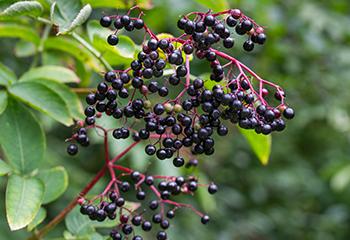 | 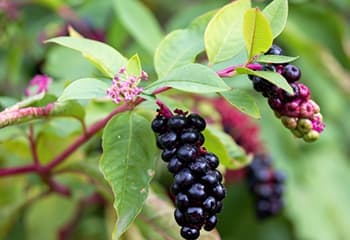 | 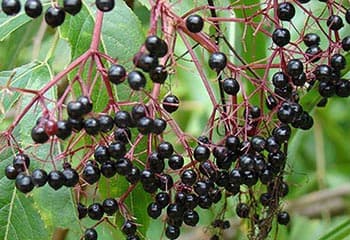 | |
| Size | 20 ft | 2 to 12 ft | 7 to 26 ft |
| Leaves | Dark green; compound; alternate; opposite; ovate leaflets; serrated | Green/gold/yellow; simple; alternate; elliptical to lance-shaped; | Green; compound; prickly; serrated leaflets |
| Flowers | Tiny; yellowish white to cream; cyme; umbels | Green/white; clusters; small/ showy | Cream/ white; clusters; umbels |
| Fruits/Seeds | Drupe berries; green to red to glossy purple or black; compressed seeds | Rounded; green to glossy purple; flattened seeds | Drupe berries; black; globular |
| Stem | Woody; light grey bark; shrub; herbaceous branches | Stout; erect; purple; smooth | Stout; thorny; occasionally branched |
| Scent | Sweet, fruity, floral, herbal; musky flowers | Acrid | Lemony |
Warnings And Cautions
Elderberry, along with most of its plant parts, is moderately poisonous when uncooked. Consuming raw elderberry can cause severe vomiting, diarrhea, or nausea.
Commercially-prepared elderberry supplements are safer when taken according to the recommended dosage.
Without reliable information to prove its safety, pregnant and breastfeeding women should avoid elderberry supplements.
Elderberry extract is possibly safe for children over five years of age when consumed orally for no longer than three days.
The immune-boosting property of elder will interfere with immunosuppressants. Patients taking such medications and those suffering from immune disorders should avoid elderberries. Thus, if you have multiple sclerosis, lupus, or rheumatoid arthritis, do not use elderberry as an herbal supplement.
For your safety, always consult a physician before taking herbal medications. Herbs can interfere with other medicine and herbal supplements and cause adverse effects or lessen the effectiveness of prescription medicines.
Probiotic Elderflower Kefir Recipe
What Can Disturb My Immune System and How to Strengthen it (Video)
How to Infuse Honey with Elderberry
DIY Elderflower And Rosehip Salve
How to Make Quinine at Home for The Immune System

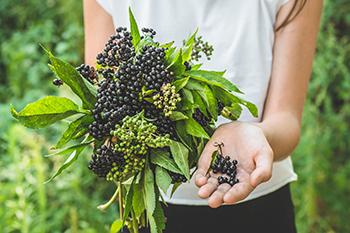
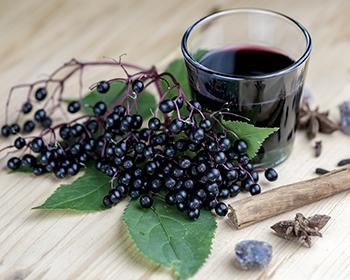
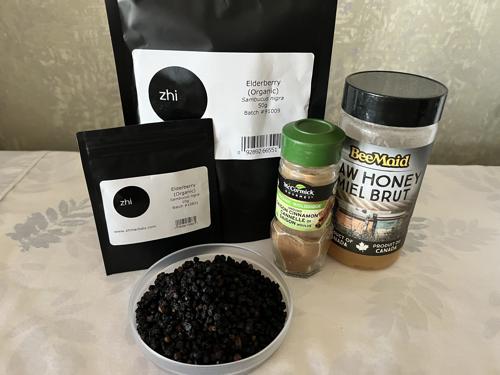
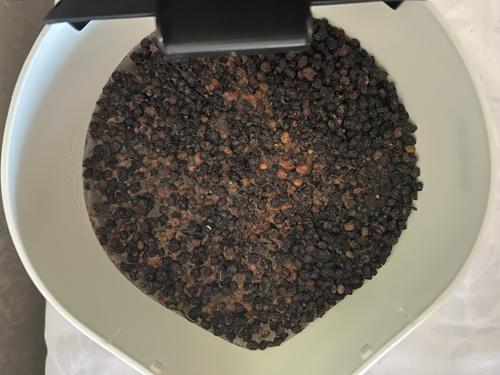
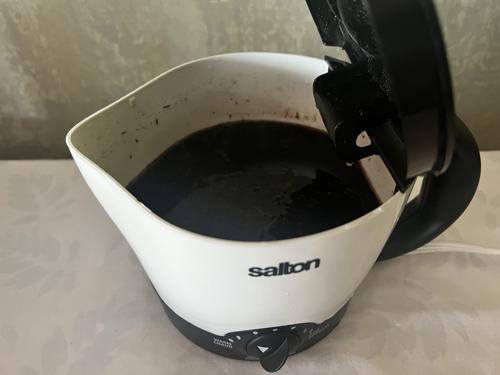
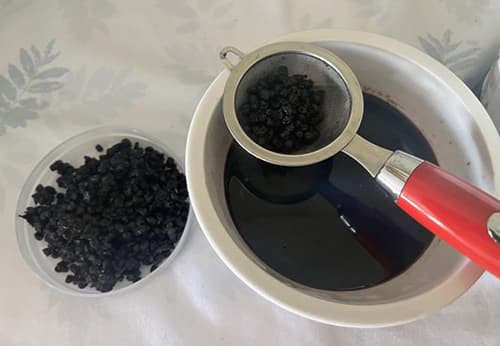
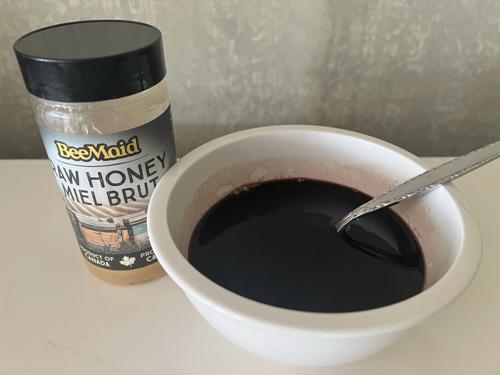
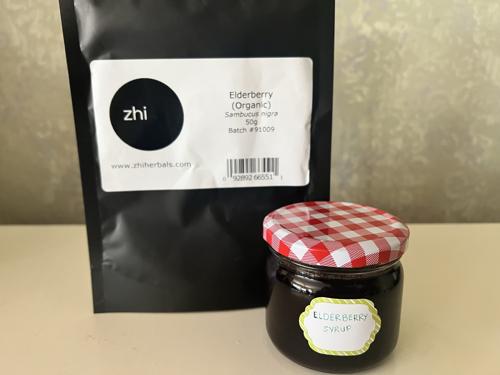

I have been using nut milk bag (Amazon) to add the dried Elderberries to water and simmer. When reduced by half leave the bagged berries cooling in the solution. When cooled it’s easy to pull the bag out, squeeze the liquid out of the bag and finish adding the honey, etc. Wash your hands after squeezing or will stain purple or wear gloves. Turn the bag inside out to discard the used berries.
Hello Marcia,
Thank you so much for sharing your tips with us! It’s extremely appreciated!
Many blessings and good health!
I’m grateful for this wonderful healing organic Sambucus Elderberry syrup which I’ve been taking morning and night for many years, and believe it’s keeping me healthy!
Hello Barbara,
Thank you for taking the time to share your experience with us! We are happy to hear you love Elderberry syrup.
Many blessings and good health!
I’m finding the cautionary note about “unripe” elderberries to be, in my personal experience, misleading. The “ripe” elderberries are every bit as toxic as the “unripe”.
What I think the framing should be in this case is “raw” and “cooked. Not ripe and unripe. I can recall my harrowing experience of consuming a quart of raw, ripe, purple elderberries on an empty stomach and throwing up at least 7 or 8 times on my way back to civilization that afternoon. Cooked okay, raw…..highly toxic with a component related to strychnine.
Hello Steve,
Thank you for your comment!
Indeed raw elderberries, as well as the seeds, leaves, and bark of the tree, contain a toxic substance. Eating or drinking raw elderberries or another toxic part of the plant can lead to nausea, vomiting, and diarrhea. We have modified the article in order to reflect that.
Many blessings and good health!
What about making a Tincture with Elderberries? Since it would be in a raw state, would that still be poisonous?
Such a great and useful article! Another plant that the elderberry can be confused it is its close cousin danewort (Sambucus ebulus). One main difference is that ripe elderberries taste very good, sweet, and delicious, while danewort berries taste kind of bitter and nasty (I personally tried both). Elderberry syrup or tincture can be used to prevent the flu instead of seasonal flu shots. If your readers would enjoy reading, I leave a link here with the elderberry tincture recipe and how to use it to prevent flu and cold. It’s an article that I wrote. Much love, https://www.mynaturaltreatment.com/how-to-use-elderberry-tincture-for-flu/#How_to_Make_Elderberry_Tincture_at_Home
I just compared this recipe to one you posted in 2020 and this recipe uses 1/2 of the amount of elderberries than the previous recipe. The previous recipe says to take 1tsp and this one says 1Tbsp. Will you please clear this up for me?